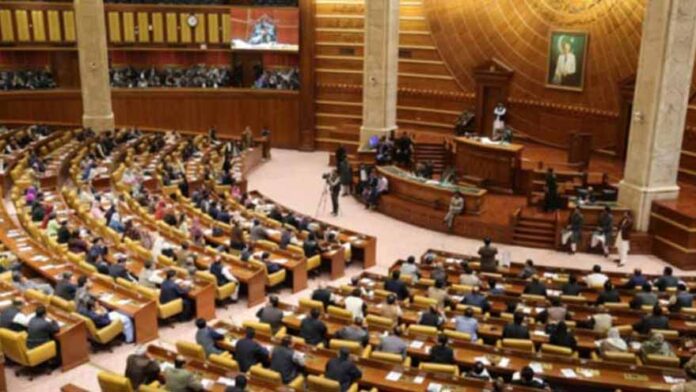UNITED NATIONS: A recent report from the United Nations has confirmed the close collaboration between two outlawed militant groups, the Balochistan Liberation Army (BLA), including its Majeed Brigade, and Tehrik-e-Taliban Pakistan (TTP). The annual report from the UN’s 1988 Taliban sanctions committee monitoring team reveals that the groups have been working in close coordination.
The report highlights the extreme brutality of some BLA attacks, citing the hijacking of the Jaffar Express in Balochistan on March 11, 2025, which resulted in the deaths of 31 people, including 21 hostages. It also touches on the April terrorist attack in Pahalgam, located in Indian Illegally Occupied Jammu Kashmir (IIOJK), without offering an opinion on the event. The Resistance Front (TRF), which initially claimed responsibility for the attack, later retracted the statement. Despite India’s push to link TRF to Lashkar-e-Tayyiba (LeT), the report refrains from doing so but notes that one member state suggested the attack would not have been possible without LeT’s backing. However, another member state rejected this claim, stating that LeT was no longer active.
According to the UN report, the TTP continues to receive substantial logistical and operational support from the Taliban. The TTP is said to have approximately 6,000 fighters, and its operational ties with ISIL-K, or Daesh, remain strong, contributing to numerous high-profile attacks with heavy casualties. The TTP’s access to a variety of weapons, including military equipment left behind by US troops in 2021, enhances the lethality of its operations. The report also indicates that the TTP has provided training to militants in Balochistan as recently as January 2025.
The Taliban’s ongoing control of Afghanistan has allowed various terrorist groups, including Al-Qaeda and its affiliates, to operate with relative freedom. The ISIL-K, described as the most serious regional and international threat, continues to recruit fighters from Afghanistan, Central Asia, and the Russian North Caucasus. There are also concerns that extremists may relocate from Syria to Afghanistan to stage operations, particularly in Central Asia.
In the northern regions of Afghanistan, close to the Pakistani border, ISIL-K has been recruiting minors, some as young as 14, for suicide bomber training. The group has prioritized attacks on Shia communities, Taliban authorities, and foreigners. Under the leadership of Sanaullah Ghafari, ISIL-K’s presence remains scattered across northern and northeastern Afghanistan, and despite efforts by the Taliban to reduce its influence, ISIL-K continues to operate with impunity.
The report highlights the growing instability in the region, exacerbated by the unimpeded activities of these militant groups, and the ongoing threat to regional security posed by their presence.
























The TTP never intended to take over Pakistan, even though they easily could/can.
They established themselves in Dec 2007 and they did what they did for the sole purpose of causing fitna.
This is why Baitullah Mehsud and Hakimullah Mehsud died like dogs instead of as martyrs.
In 2009, the TTP had taken over 80% of Swat and they were on their way to reaching Islamabad, but instead of keeping the momentum going, they agreed to a very counter-productive ceasefire with Pakistan where in exchange for Pakistan recognizing the territories they control and allowing them to govern those areas according to Sharia law, the TTP would halt their advance.
The TTP gave those territories away to Pakistan under the excuse that the Pakistani army launched a surprise offensive against them which they did not expect and because their militants were walking the streets unarmed instead of being armed in the jungles and mountains.
When the 2011 Mumbai attacks happened, and India threatened to respond to Pakistan, Hakimullah Mehsud warned India not to do that, saying if war erupted between India and Pakistan, the TTP would fight alongside Pakistan against India because Pakistanis are Muslim while India is kafir/Hindu.
The TTP should have been / should be quickly dealt with by killing every single Mehsud man, woman, and child.